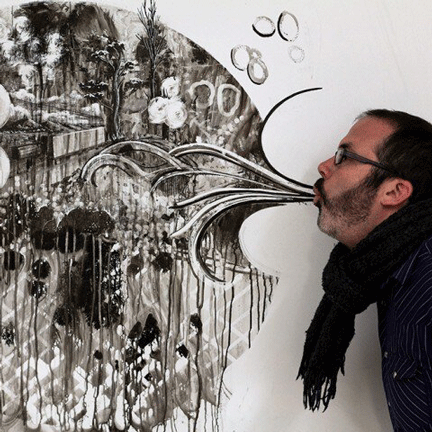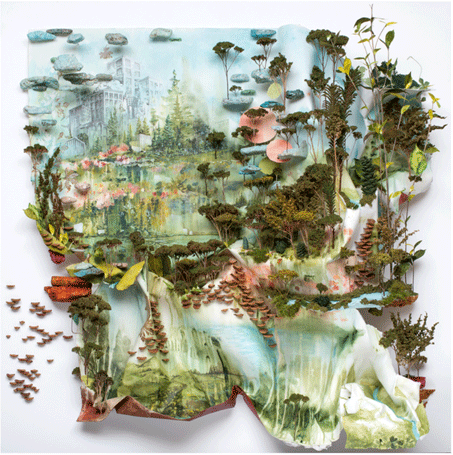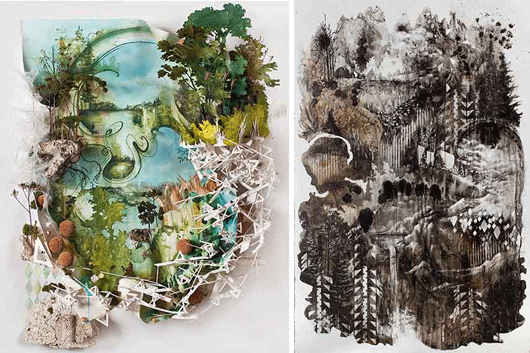It is no secret that the human race has left irreversible effects on the planet. Pollution, over-extraction and deforestation have completely changed the natural landscape of Earth and yet many modern artistic depictions of forestry remain pristine. However, Minnesota-based artist and teacher Gregory Euclide works to create pieces that transcend categorization and reveal what modern landscapes truly look like, pollution and plastics included.
Using both traditional watercolours and inks as well as organic objects found near the Minnesota River where he resides, Euclide is not scared to depict the reality of modern landscapes while addressing the UN’s Sustainable Development Goals (SDGs) of Climate Action, Life on Land, and Sustainable Communities.

Euclide’s work is described as relief work, as many of his pieces protrude from the flat surface of his canvas. Euclide says he does this purposefully so that those looking at his work are forced to look at the scenes from a variety of different perspectives. As the rivers and grassy plains spill off of his canvas, it demands viewers acknowledge North American nature is no longer clean and flat grassy plains, it is plastic and pollution intermingled with flowers and fields.
It is not only Euclide’s depictions of these scenes but the actual materials he uses that calls attention to the need for action against climate change. In fact, much like the Earth, Euclide’s art needs to be taken care of “like a garden”. Euclide has stated that he purposefully makes his art organic and interactive to be something that you need to tend to, “that you have a relationship with”.

Many of his pieces begin with a painted background of a scenic spot in nature, such as a lush forest set against a blue sky before he begins adding 3D components such as topographical elements, ripped scraps of paper, moss, rocks, old paint tubes pieces of plastic in geometric shapes and even scraps from his old exhibitions to portray the overlap of the organic and unnatural. In an interview with Figure/Ground, Euclide stated that he was not interested in “recreating the world but highlighting the dialogue between landscape painting and the land itself”.

Although his pieces are delicate, his message is fierce. “Humanity is very shortsighted,” he told Fast Horse. “Even if we have the science that would allow us to solve a problem, very few people are willing to sacrifice their way of life to obtain that solution. I am not super optimistic about our ability to maintain a healthy environment.”
Euclide currently works as an art teacher, inspiring the next generation of sustainable artists. His work can be found here.
